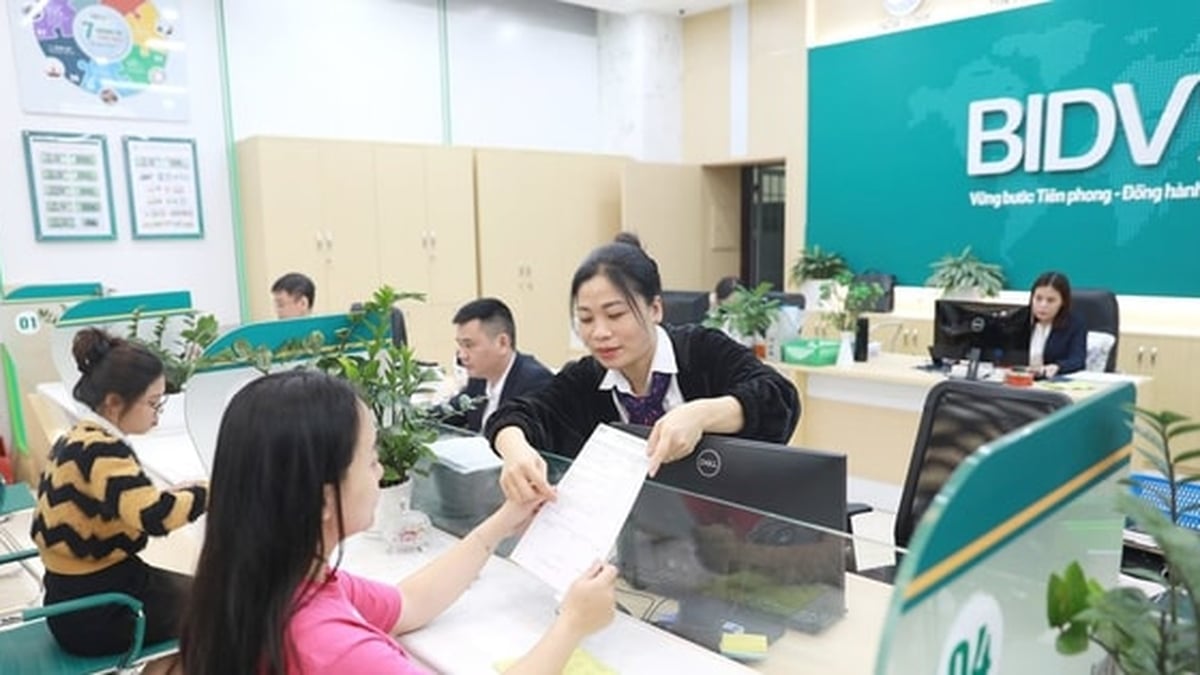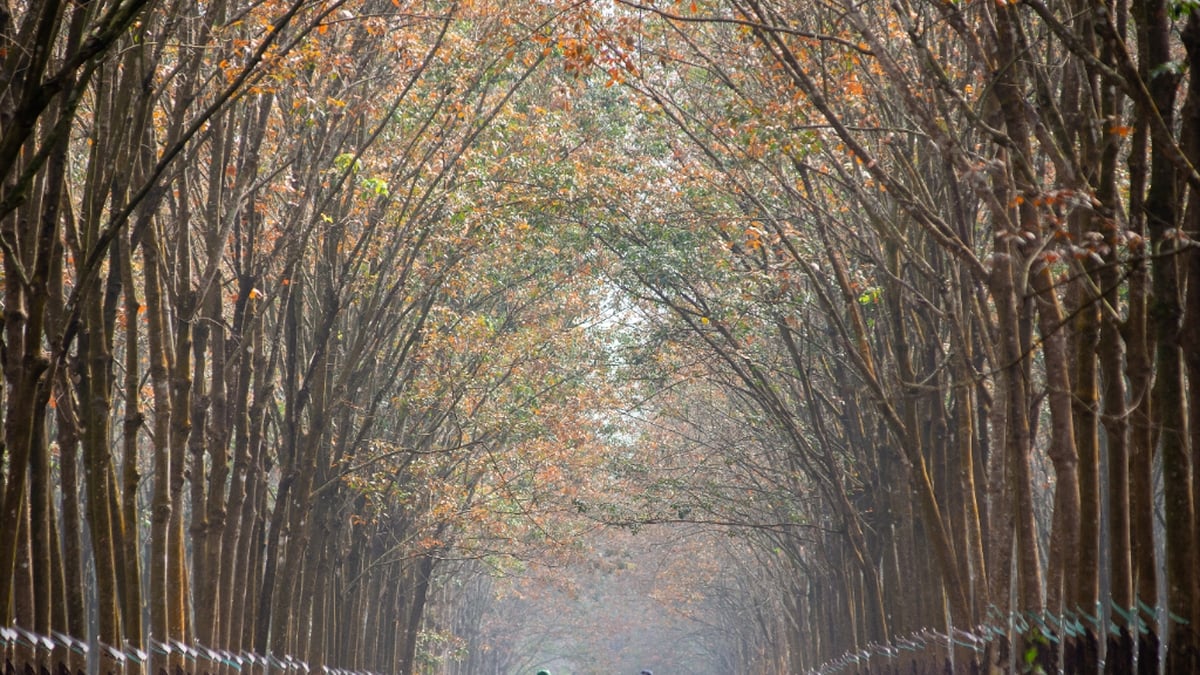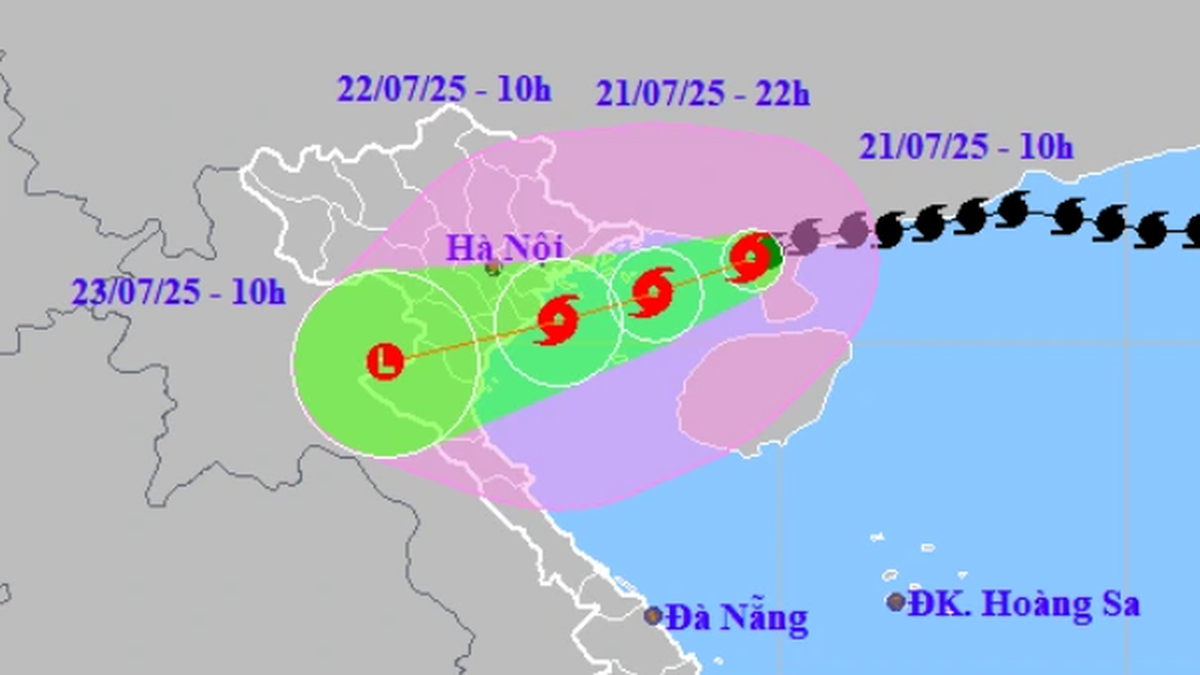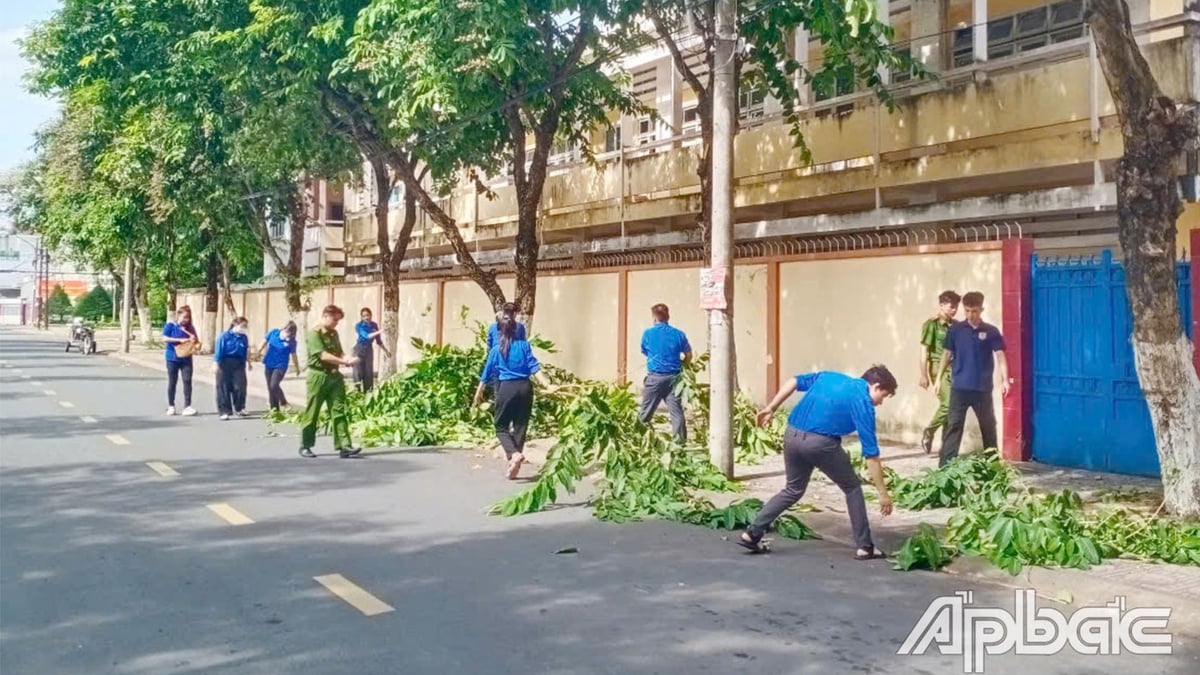 |
| Vinh Thanh lotus root has both a good harvest and a good price. |
At 3 p.m., we followed Mr. Phan Ba Ly, one of the households with the largest lotus growing area in the commune, to the lotus field near Vinh Thanh afternoon market. Most of the lotus fields had turned brown, only a few lotus seed fields were producing new clusters of fresh green leaves. In the lotus fields, under the early autumn sun, farmers were busy harvesting lotus roots.
Wading down into the still muddy lotus field, showing us the part of the field that his family was digging, Mr. Ly said: “After the lotus leaves turn brown, usually from August to September, the lotus roots can be harvested. This year, although pests and diseases, especially anthracnose, have affected productivity, thanks to timely pest control and proper care, the lotus roots are still of good quality.”
Thanks to the abundant labor force in the house, Mr. Ly did not hire additional diggers. For families with few members, to harvest lotus roots effectively, many lotus field owners have proactively hired additional workers, ensuring that the lotus roots are harvested before the rainy season. The diggers will use 5-tooth or 3-tooth hoes to pry up each piece of mud mixed with lotus roots. After being lifted, the lotus roots will be sorted and simply cleaned to remove the mud stuck on the roots.
Like many other lotus growers, this year Mr. Ly's lotus field produces large, uniform, and good quality tubers. Mr. Ly excitedly said: "Compared to last year, this year's lotus tuber yield has increased by 10%. On average, each sao of lotus cultivation brings farmers from 150 to 200 kg of tubers." Depending on the size, lotus tubers will be purchased at home by traders at a price of 10,000 to 30,000 VND/kg, bringing a decent income to the people.
Ms. Nguyen Thi Bich, a lotus root trader, said: “In recent years, I often buy Vinh Thanh lotus roots to sell to markets, send wholesale and retail. The quality of lotus roots is good, both in appearance and flavor, and the price is reasonable, so many people buy them to prepare dishes, make tea, make jam, and lotus root powder. In addition to selling locally, I also pack the roots and send them by truck to wholesalers in Ho Chi Minh City and Da Nang. These customers also really like Vinh Thanh lotus roots.”
In addition to selling through traders, some lotus growers have also taken advantage of social networks to advertise and post lotus roots for sale. Thanks to that, Vinh Thanh lotus roots are "attracted" to customers, and wherever they are dug, they are purchased. Growers, hired diggers, and sellers are all happy.
In the past 5 years, the lotus growing model replacing rice cultivation in low-lying, low-yield fields in Vinh Thanh commune has brought about remarkable results. As a crop that requires little care and is suitable for low-lying, swampy terrain, many households have boldly converted ineffective rice fields to lotus cultivation. Some households have even applied new farming methods, pumping water to grow lotus in dry fields to have a stable source of income from lotus flowers, seeds and tubers. Thanks to the application of proper care, prevention and treatment of pests and diseases, Vinh Thanh lotus has brought stable income to growers, lotus root diggers and traders.
Mr. Nguyen Van Trinh, Vice Chairman of Vinh Thanh Commune People's Committee, said: "In 2024, the commune has 25 hectares of low-lying, low-yielding rice fields that are being converted to lotus cultivation. Currently, households are actively harvesting lotus roots as well as taking care of seedlings to prepare for the new crop. With high tuber yield and good quality, lotus is proof of the conversion of crop structure suitable to land and soil conditions, contributing to the development of local agricultural economy ."
Source: https://baothuathienhue.vn/kinh-te/hoi-ha-mua-thu-hoach-cu-sen-145761.html






















![[Photo] National Assembly Chairman Tran Thanh Man visits Vietnamese Heroic Mother Ta Thi Tran](https://vphoto.vietnam.vn/thumb/1200x675/vietnam/resource/IMAGE/2025/7/20/765c0bd057dd44ad83ab89fe0255b783)











































































Comment (0)